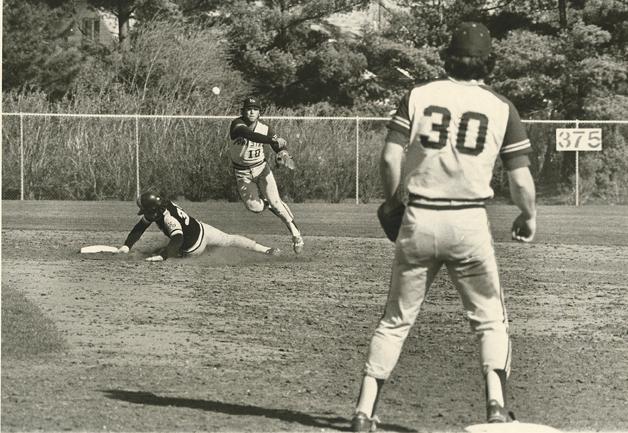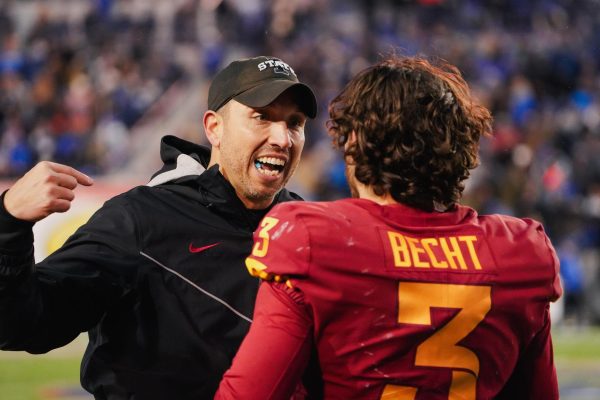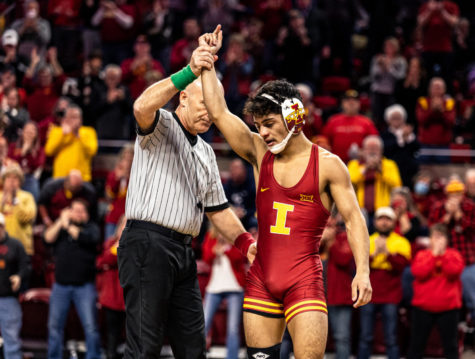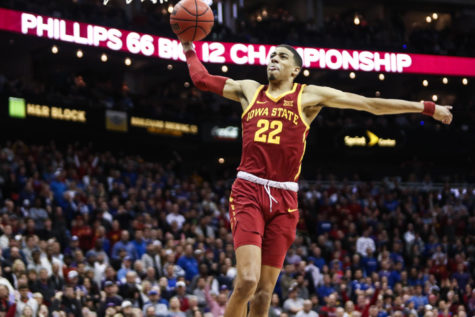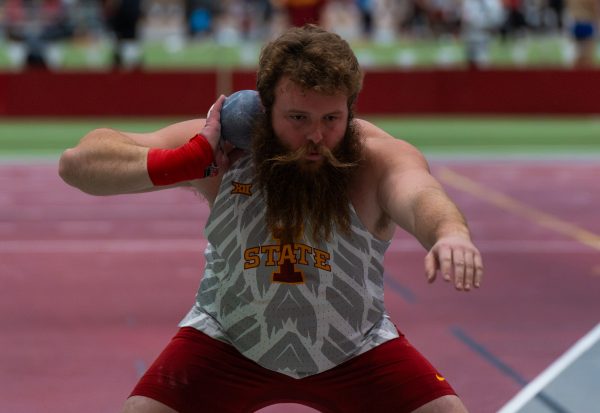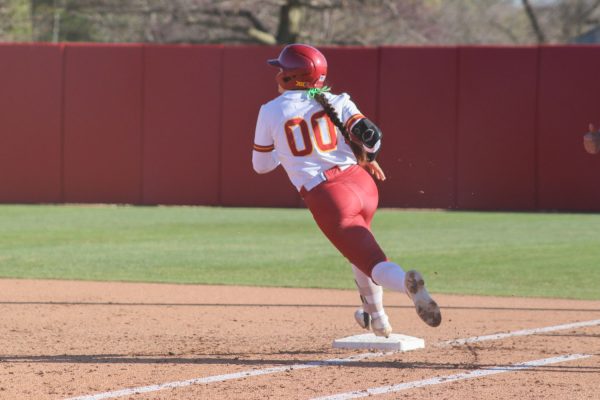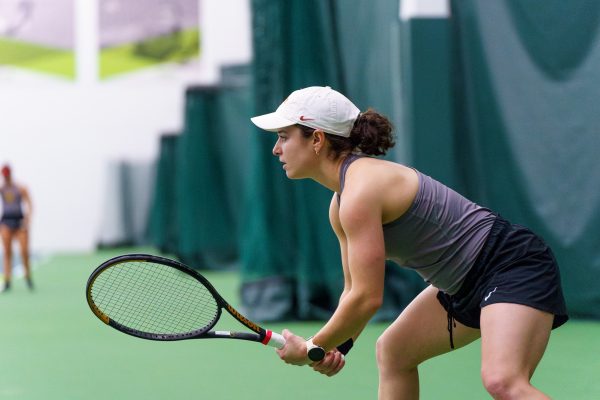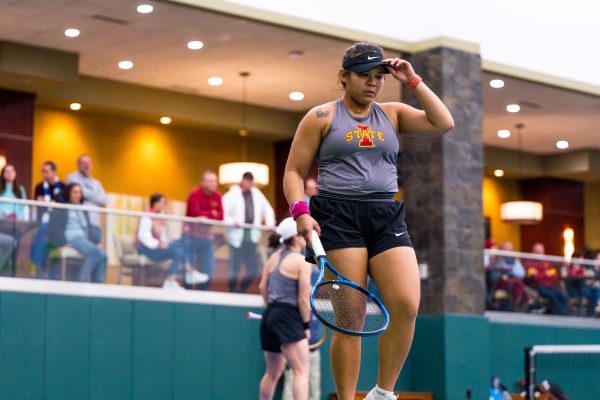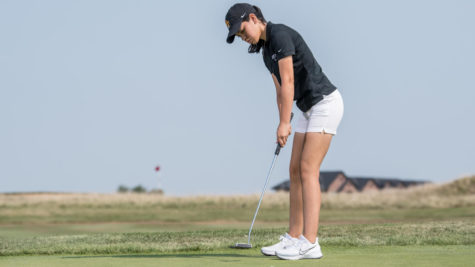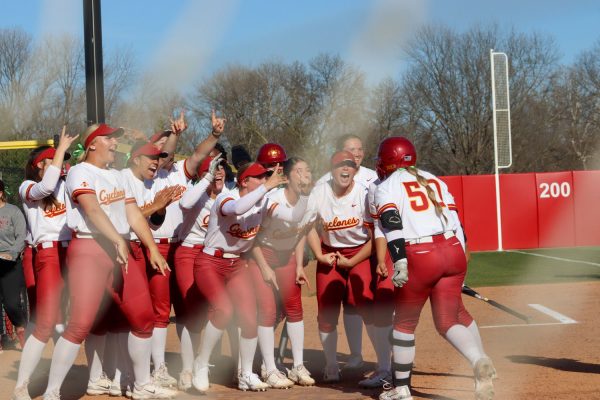Iowa State, others lose touch with national pastime
January 27, 2011
It was the start of the Big 12 baseball tournament Thursday, May 17, 2001. Iowa State had runners on second and third base in the bottom of the ninth inning.
Baylor was up 5-4. ISU senior Rob Conway was up to bat.
There were hundreds, maybe thousands of fans cheering and stomping for a team that was fighting to put one more win in its 109-year history.
Conway hit a sharp ground ball to Baylor second baseman Trevor Mote. The ball took a hop and skipped off of Mote’s glove and into right field.
Pinch runner Beau Hampton was waved home. His head-first slide would beat the throw and the Cyclones defeated the Baylor Bears 6-5 to keep their final season alive.
The ISU baseball team and the rest of Cyclone nation was informed April 2, 2001, that the athletic department could no longer afford to have baseball and it, along with men’s swimming and diving, was to be cut.
Coach Lyle Smith would first hear the news from an Ames Tribune reporter the night after his team finished taking two out of three games from a ranked Oklahoma State team.
“As a long time employee that had been loyal to the system, it was a real slap in the face,” Smith said.
After the Baylor game, Iowa State’s next contest was the following day against Oklahoma State. The Cyclones would get thumped, 17-4, closing the book on the program. The team walked off the field to a standing ovation from more than 8,000 fans.
Spencer Allen was a second baseman and senior captain in the final season.
“It was hard,” Allen said. “It hits you once you’re walking off the field.”
Allen remembered the great experience of playing baseball at Iowa State and competing in the Big 12 right up to that final out.
“We were all really close,” Allen said. “From an athlete’s perspective, baseball was everything.”
Iowa State lost one of its oldest traditions May 18, 2001, in Oklahoma City. The 2001 season brought more excitement to campus than ever imagined.
People didn’t want to see it end because they knew what it meant; baseball was gone from Iowa State.
An historic program
An Iowa State Daily editorial published May 22, 2001, painted a picture of the Daily staff huddled around a radio listening to the Baylor game.
“Even in a newsroom filled with less-than-athletic journalists,” it read, “the spirit of baseball was alive.”
The ISU baseball program began in 1892, and it produced major league players such as infielder Mike Busch and pitchers Mike Myers and Don Wengert.
In 109 years, Iowa State held a record of 1,346 wins; 1,412 loses; and 17 ties. No other school that made the Big 12 tournament in 2001 had played more seasons.
The program had College World Series appearances in 1957 and 1970, and the baseball program was once put at the top of the list like football and basketball are today.
Unfortunately, due to a $1.4 million budget shortfall, geographical placement, Title IX and a lack of competitiveness in the Big 12, there was no choice but to cut the program.
Looking back on the on the program, there have been mixed feelings about what could have been done.
Former player Spencer Allen recalls that his frustration at the time went without knowing the economic side of things. He now looks back as an adult and realizes the predicament the administration was in.
“I’m not bitter about it,” Allen said. “You wish it could still be around, but I understand it.”
The last coach Iowa State had, Lyle Smith, found it upsetting to be told the team wasn’t competitive enough. He felt there could have been some things done in order to keep them competitive, especially when it came to recruiting against Nebraska and schools in the south.
“We could compete with those people,” Smith said. “We had quality players.”
Smith made the comparison of showing recruits Cap Timm Field — now the home of the ISU baseball club at the Southwest Athletic Complex — compared to the facilities they were going to see at a Nebraska or Texas.
“If you don’t provide facilities that are equal to the other schools, how can you sell a Model T when everyone else is selling a Camaro?” Smith said.
Smith was challenged with leading his team through the rest of the season knowing there was no ‘next year.’ He told his players they could hold their heads high and play it out, or they could walk around with their heads somewhere else and pout.
“Well, they bought into the first and played very well,” Smith said. “That was probably the best year of coaching I’ve ever had.”
Smith said his players represented the university and, better yet, they represented themselves.
“I have all the admiration in the world for those guys,” Smith said. “It wasn’t easy, and they were an inspiration to some people.”
Smith had his own admirers, his players.
“Lyle was a very good pitching coach,” Allen said. “He was good to me as an individual. He was a good family guy and a straight shooter.”
Smith is now the executive director of the Sioux Empire Baseball Association in Sioux City, S.D. Allen has been named an assistant coach for the Washington State Cougars baseball team.
The economics of change
Current ISU athletic director Jamie Pollard wasn’t surprised baseball didn’t exist at Iowa State when he arrived. He also expressed the great challenges the university would have of bringing back the program any time soon.
“There are some monumental up-front costs to make that decision,” Pollard said. “Right now, it’s so unrealistic.”
Pollard rejects the accusation some have made that the state of Iowa is not a good enough baseball market.
“I wouldn’t say that,” Pollard said. “Our challenge is that it’s a huge disadvantage to be in a conference that has all south geographics.”
Iowa State is far from being the only school to lose its baseball team.
Northern Iowa’s baseball program was also the victim of budget cuts in 2009. UNI’s director of athletics, Troy Dannen, made the decision and announced it shortly after the 2009 season had begun.
Some say that athletic departments only care about football and basketball. Dannen clearly expressed that programs aren’t cut just because they can be.
“Baseball was not eliminated because the university did not care for the program,” he said. “Caring and funding are two different things.”
Past athletic directors have also been accused of not attending sports other than football and basketball and that’s why it is so easy to cut them.
The truth is that it’s not easy to cut a program and it’s not all that easy to “make time” to attend events.
“It’s not even making time as much as it is you want to be there,” Pollard said. “We’re all in it together.”
People are paying more attention now that a more competitive college baseball program will be cut.
The University of California-Berkeley announced Sept. 28, 2010, it would eliminate baseball after the 2011 season. Cal won national championships in 1947 and 1957.
“When Cal drops baseball, that’s a red flag,” said Tom Shatel, a columnist for the Omaha World-Herald. “I would be concerned about a Pac-10 school dropping baseball.”
Other schools like Massachusetts, Wisconsin and Vermont have dropped their baseball programs in the past two decades.
Prior to 2006 the CWS did not see a champion from the north since Ohio State in 1967.
Recently, competitive northern schools include Oregon and Oregon State, with Oregon State winning the championship in 2006 and 2007.
Despite the recent concerns, college baseball doesn’t seem to be going away as a whole anytime soon. Schools in Texas, Oregon and California are still a thriving representative for college baseball.
There have been proposed alternatives to make sure northern schools have hope of baseball surviving.
“Start the season in May or June and have the College World Series in August,” Shatel said. “Schools in the north would have the fighting chance to get recruits and crowds.”
This plan sounds ideal, but it could get complicated if put into place.
“Now you’re starting to get outside of the school year,” Pollard said. “It’s tough, it’s really tough.”

